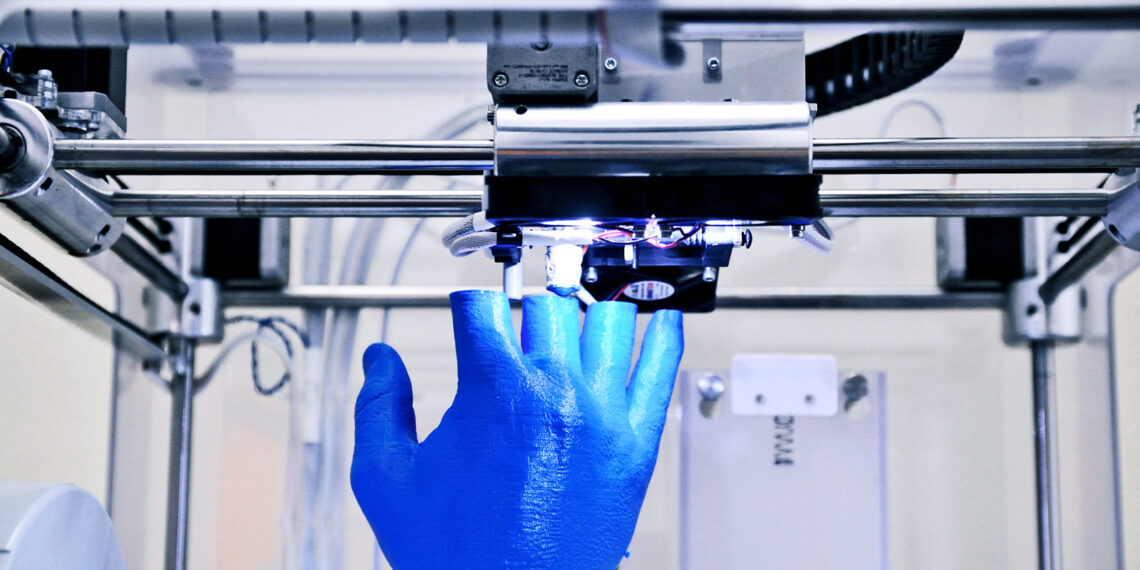Today, 3D printing is a commonly used technology for manufacturing parts, prototypes, and short-run production runs. It is also proving to be an important tool for developing medical devices and products. With the increasing use of this technology in industries from automotive to electronics, it is only a matter of time before it finds its place in healthcare as well. Here’s how the future of medicine will look once we start incorporating 3D printing into routine practices:
3D Printing In Healthcare: A Primer
When you think of 3D printing, you might imagine a futuristic world where doctors make prosthetics, patients get custom surgeries, and even organ transplants are made at home. Although this technology is still in its infancy, it is already revolutionizing manufacturing, and we are just at the beginning stages of how it will change healthcare.
3D printing is a process of making products by building shapes layer by layer, usually from a digital file. The most common use of 3D printing is in the field of manufacturing. By using advanced 3D printing technologies, businesses are able to create complex parts and models that were not possible before. The automotive industry has been using 3D printing for several years, and it has found many benefits for their industry.
Benefits of 3D Printing in Healthcare
The ability to create customized prosthetics – When you need a prosthetic limb, you can’t just choose a pair from a catalog. You have to be able to try the prosthesis on, fit it to your body, and then see whether it works for you or not. Luckily, there has been a rise in the use of 3D printing in the field of prosthetics. With the help of 3D printing, prosthetic limbs can now be created as per prescription.
More importantly, custom prosthetic limbs can be used to bridge the gap between a human and an inanimate object, which means that you now have a sense of ownership over your limb. Customized implants – In the case of orthopedic surgeries or joint replacements, patients have to undergo an extensive amount of physical therapy after the surgeries.
This is because the implants used in surgeries have to be taken out from the body, which means the patient has to endure a lot of pain. However, with the help of advanced 3D printing, it is now possible to create implants that can be worn for extended periods of time without any pain.
Customized medical equipment – If you have a serious medical condition that requires regular checkups, it can be exhausting going to the hospital, getting a physical exam, and then having the results analyzed and interpreted by a doctor. Fortunately, with the help of 3D printing, you can now create your own medical equipment that can be used for regular checkups.
Customized surgeries – 3D printing also has the potential to change the way we perform surgeries. For example, it is possible to create models of the human body so that surgeons can see the inside of the body while performing the surgery. This can help surgeons to perform surgeries in a more precise manner, thereby reducing the risk of complications.
Customized healthcare services – If you have an aging or sick family member, you may have to spend a lot of time taking care of them. Even with all the care, you might feel that you don’t have enough time for yourself due to your family’s needs. Fortunately, with the help of 3D printing, it is now possible for somebody to create a service that can help you with your family members without any additional effort.
Limitations of 3D Printing in Healthcare
While 3D printing can significantly impact the way we treat certain medical conditions and create customized medical equipment, it also has its limitations. Some of these limitations are as follows: –
- Accuracy – As mentioned above, 3D printing technology is not as accurate as traditional manufacturing techniques. This means that the parts created with 3D printing cannot be used for critical applications such as aircraft, satellites, and nuclear reactors.
- Limited materials – Even though we are at the early stages of 3D printing, it is already clear that the technology can work with a small collection of materials such as bio-ink, metals, plastics, and wood. However, using other materials such as sand, food, and human body parts is still a big challenge for present-day 3D printers.
- Lab-grown products – For the time being, 3D printing is not really adept at creating products that are made from a mix of materials. This means that all the items created will be a single material.
- Scalability – The most significant challenge that 3D printing faces right now is the issue of scalability. Although the technology has shown great potential in the field of manufacturing, it has only been used in small-scale projects so far. The way things are going, it seems like we are still a long way from finding solutions to issues like materials, accuracy, and scalability.
How 3D Printing in Healthcare is Being Done?
In order to make the use of 3D printing in healthcare a reality, we first need to solve the scalability issue that we discussed above. Currently, the scanning systems used in hospitals to create 3D models are very expensive and consume a lot of energy. This can make 3D printing seem like a much better alternative. However, many companies are working on developing cheap and energy-efficient scanners that can be used for both scanning and 3D printing.
These machines can be placed at health facilities, clinics, and even at home. Another way that companies are using 3D printing for healthcare is by creating custom models for doctors to demonstrate the effects of treatments on patients. This can help doctors understand a treatment’s effect on patients better and make better medical decisions. However, most of the projects using 3D printing for healthcare are still in the testing phase.
Conclusion
3D printing is a fascinating technology that is just starting to find applications in healthcare. The technology has the potential to revolutionize how we create customized prosthetics and implants, create customized medical equipment, and even perform surgeries.
Although the technology has limitations such as the limited materials that can be used, the scanners that create the models, and the scalability of the final products, it is still too early to tell whether this technology can really change the healthcare industry.
It is important to note that 3D printing is still in the early stages of development, and it will take some time for the technology to become fully operational in the healthcare industry. In the coming years, we can expect to see the use of 3D printing become more common in healthcare.






